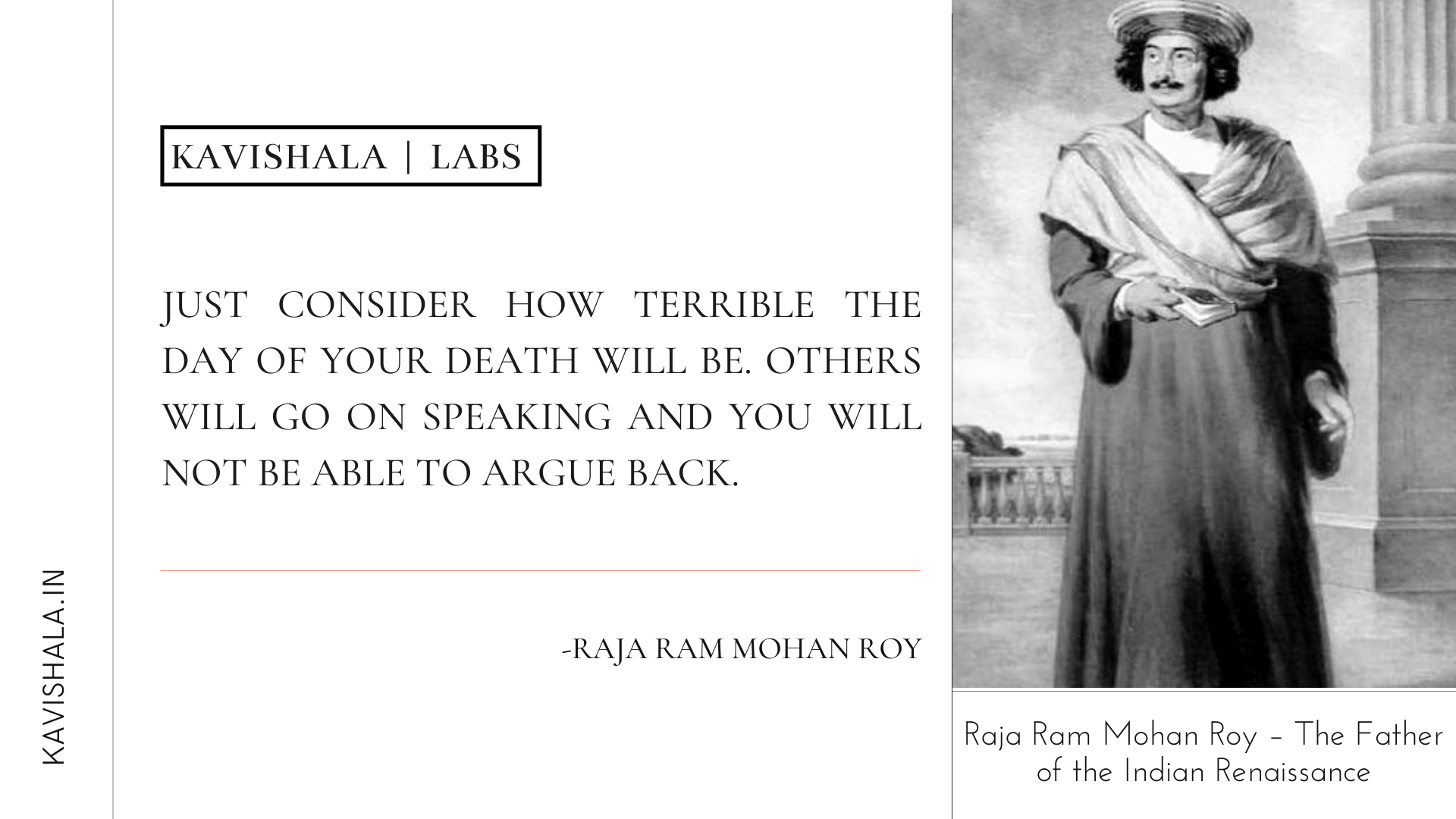
The Great Indian Social Reformer Who Is Also Known As The Father Of The Indian Renaissance - Raja Ram Mohan Roy
Just two centuries back in India, there was a very common ritual in the Hindu society, especially in Bengal. Women, whose husbands die, would be forced to sit on the funeral pyre with their husband’s body, and burned alive!
An Indian who went to England as Indian ambassador, and ensured that Lord William Bentinck’s regulation to ban Sati, becomes a Law. Since then the lives of millions of Indian widows have been saved.
Raja Ram Mohan Roy was the person to whom goes the credit. He is rightly remembered as the Father of the Indian Renaissance. He also fought against polygamy, child marriage, untouchability, dowry etc. He established a number of schools to popularize a modern system of education with emphasis on English in India.
A great scholar of ancient Hindu scriptures, he was proficient in several languages including Persian, Arabic, English, Bengali and Sanskrit. In 1828, he founded the Brahmo Samaj, which turned out to be a very influential reforms movement.
Early Life and Education (1772–1796)
Ram Mohan Roy was born on 22 May 1772 in Radhanagar of Hooghly District in what was then Bengal Presidency. His father Ramkanto believed in Vaishnavism while his mother, Tarinidevi, was a Shivaite.
Ram Mohan Roy had a good education. He was given the best of the both worlds. On one hand he was given education that would bring him success in real world; he was also given education that was spiritual in nature.
Ram Mohan started his formal education in the village pathshala where he learned Bengali, Sanskrit and Persian. Later he went to Patna and studied Persian and Arabic in a madrasa. After that he went to Benares to learn the intricacies of Sanskrit and Hindu scriptures.
His Life During the Early Rule of the East India Company (1795–1828)
During these periods, Ram Mohan Roy acted as a political agitator while employed by the East India Company.
In 1793, British Baptist shoemaker William Carey landed in India to propagate Christianity in India. He realized that Brahmins and Pundits were most able to help him in this.
In 1797, Ram Mohan arrived in Kolkata and became a bania or moneylender to Englishmen of the Company while continuing his profession of pundit. He also began learning Greek and Latin.
The trio of Carey, Vidyavagish, a tantric, and Roy created a religious work known as the Maha Nirvana Tantra or Book of the Great Liberation.
From 1803 to 1815, Ram Mohan worked in the East India Company’s Writing Service. He joined initially as private clerk or munshi to Thomas Woodroffe, who was Registrar at the Murshidabad Court.
Roy resigned from Woodroffe’s service and got employment with John Digby, a Company collector, and spent many years at Rangpur.
Ram Mohan Roy was one of the first to try attempt how much money was being taken out of India and to where.
During the next two decades, Ram Mohan attacked the evils of Hinduism especially those of his own Kulin Brahmin priestly clan. One of these social evils was Sati, where widows were cremated alive along with their husbands. The other evils were polygamy, untouchability, idolatry, child marriages and dowry.
His Contributions through the Brahmo Samaj (1820–1830)
During this period he had lot of published work like his articles in Brahmanical magazine, an article titled Brief Remarks on Ancient Female Rights in Persian paper Mirat-ul-Akhbar etc. Here is a brief list of his literary achievements:
- In 1821, brought out a Bengali newspaper called Sambad Kaumudi.
